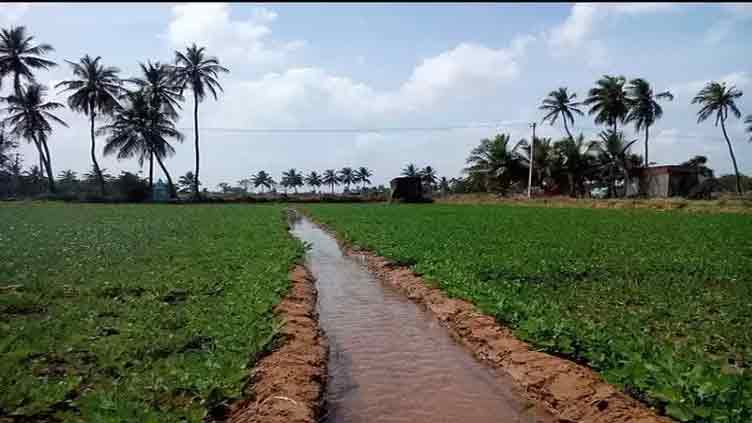Farmer-friendly irrigation project goes down the drain

Pakistan
Did irrigation department officers not like power sharing with farmers?
By Javed Iqbal
LAHORE - The authorities approved the abolition of a long-standing flagship public-private partnership programme (PPPP) in the irrigation sector, which had been running for 27 years with foreign assistance.
A summary, in this regard, will be moved for final approval to Punjab Chief Minister Maryam Nawaz.
The services of the regular staff of the authority would be transferred to the surplus pool of the S&GAD for further posting.
Why PIDA was established?
Established in 1997 in the Punjab Irrigation Department, the Punjab Irrigation and Drainage Authority (PIDA) was meant to introduce reforms by involving farmers. Despite funding from donor agencies to make the project farmer-inclusive, it was alleged that it failed to achieve its objectives, and conditions worsened instead.
Area Water Boards and farmer organisations (FOs) were formed under this project in selected zones. The initial plan was to replace the Punjab Irrigation Department (PID) with PIDA.
Success Stories of PIDA
According to the World Bank report, FOs resolved more than 2,800 water disputes, including 1,758 cases related to water theft, and increased water availability by addressing theft issues.
However, political elites and bureaucratic resistance hindered the project’s success.
The Punjab government had repealed PIDA through an ordinance, establishing another authority with no functions in its place. The stated reason for abolishing PIDA was its failure to meet objectives, evidenced by lower Abiyana collection rates – 45pc in PIDA areas compared to 70pc in other areas.
Why Punjab Khal Panchayat Authority (PKPA) was established?
After PIDA's conversion into the Punjab Khal Panchayat Authority (PKPA) in May 2019, the authority became defunct, although many officers remained posted there. It is said that the authority had become a parking place for those officers who had differences with the top hierarchy.
Why irrigation officers occupied top positions in PIDA, PKPA?
A senior authority official requesting privacy questioned the justification for salaries and benefits given the lack of work in PKPA. He noted that senior officers were usually sidelined in PKPA. The department's performance, he alleged, remains unsatisfactory, with rampant water theft and ineffective recovery. He alleged that there was no mechanism to check the performance of officers in the irrigation sector.
He said that one reason of failure was posting of top level officers in the authority.
Why authority became a parking place for irrigation officers?
Documents show that PKPA has four Grade 20 slots (one Managing Director and three General Managers for admin, finance, and operations), four Deputy Managing Director slots in Grade 19, 15 Grade 18 manager positions, and 84 Grade 17 officer positions. The Irrigation Department secretary served as the managing director of the authority since it was established.
Out of 285 sanctioned posts, 151 were filled, leaving 134 vacant as per the past data.
The approved budget for the authority in 2021-22 was Rs292 million, including Rs200 million for salaries, Rs39 million for travel and transportation, Rs26 million for ads, and Rs12 million for repair and maintenance.
As per the authority's last minutes of the meeting, one reason cited for abolishing the authority was the high expenditure on annual elections of KPs, amounting to Rs598 million, with the Punjab exchequer bearing an additional Rs411 million.
When PKPA was established, it had Rs400 million in accounts, which were drained on staff salaries due to a lack of a sustainable funding model.
Foreign funding details
An insider while sharing details said that in December 2006, the Asian Development Bank (ADB) had approved a $900 million multitranche financing facility (MFF) for the Punjab Irrigated Agriculture Investment Program (PIAIP) to co-finance irrigation sector investments in Punjab. This included two loans totaling $227.8 million for the first project.
The MFF aimed to improve irrigation infrastructure and promote institutional reform for farmer management of the irrigation system.
Punjab's irrigated agriculture, which accounts for 26pc of its GDP and employs over 40pc of its labour force, covers 8.4 million hectares with a cropping intensity of over 120pc.
Fourteen barrages supply water through 22 main and link canals, with the infrastructure valued at about $18 billion and requiring over $3 billion for upgrades. The Country Partnership Strategy (CPS) (2009-2013) prioritises improving irrigation infrastructure, institutions, and agricultural productivity.
Achievements of the PPPP
The PID transferred the management of 1.5 million hectares to farmer organisations (FOs). The Lower Bari Doab Canal Improvement Project (LBDCIP) under MFF tranche 1 was improving infrastructure and supporting institutional reforms.
Tranche 2 financed the New Khanki Barrage Project (NKBP), benefiting 568,000 farming families. ADB’s third financing request for $73 million under Tranche 3 aimed to improve the Suleimanki Barrage, ensuring reliable water supply to 1.01 million hectares and benefiting more than 360,000 farming families.
Who was responsible for PPPP's failure? Will the responsible be brought to justice?
Planning and Development Board's senior member also conditioning anonymity said that the abolition of the PKPA would be a blow to the much-trumpeted PPPP model in Punjab in addition to the trust deficit with foreign donor agencies like Jica, ADB, and World Bank. With the abolition of the PIDA and now PKPA, the participation of farmers in irrigation management also ceased to function. He said that think tanks or university students should work on this classic failure of the PPPP model. He suggested that the need is to dig out how much foreign funding was drained to run this project, and who was responsible for the failure.


